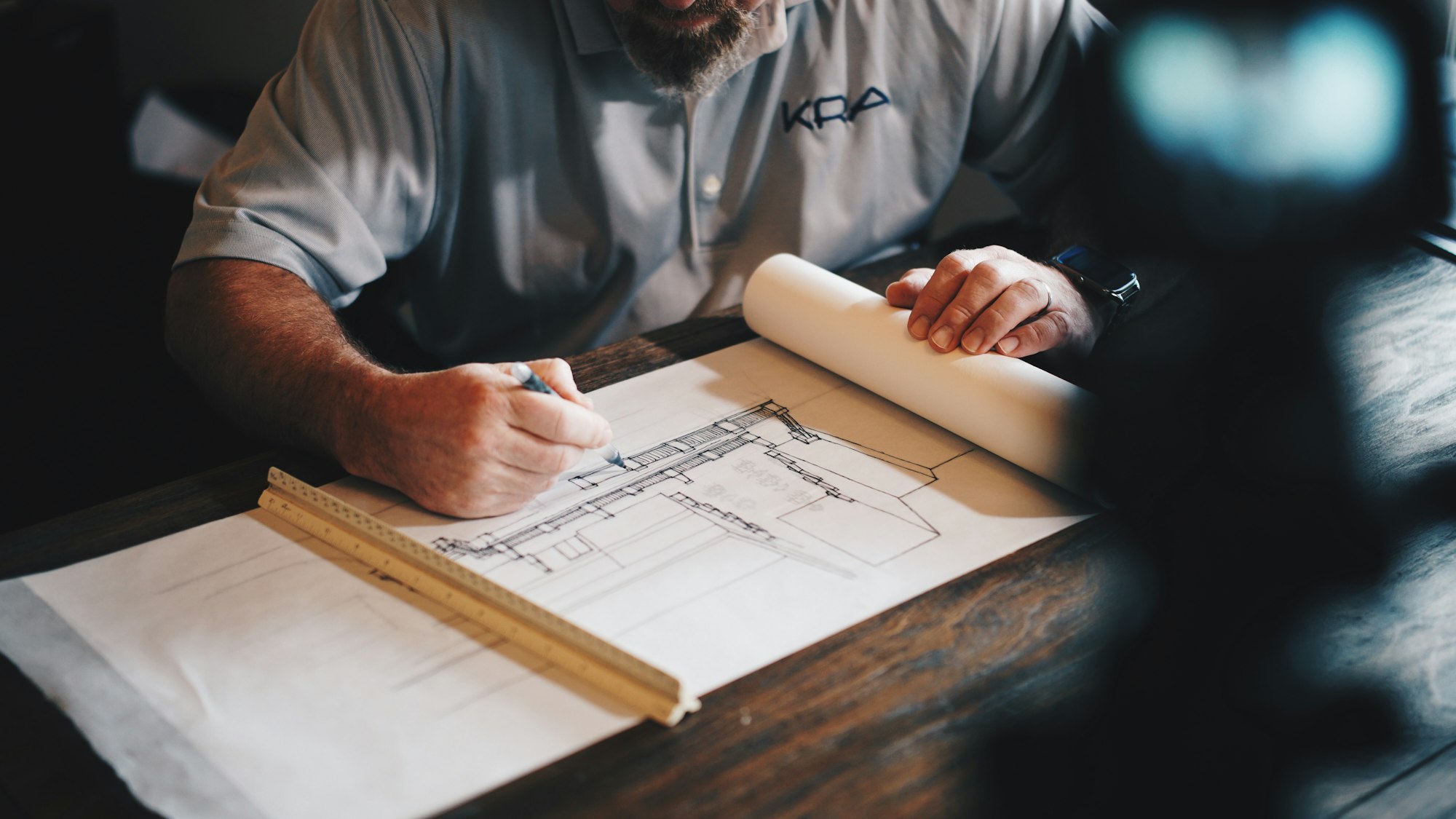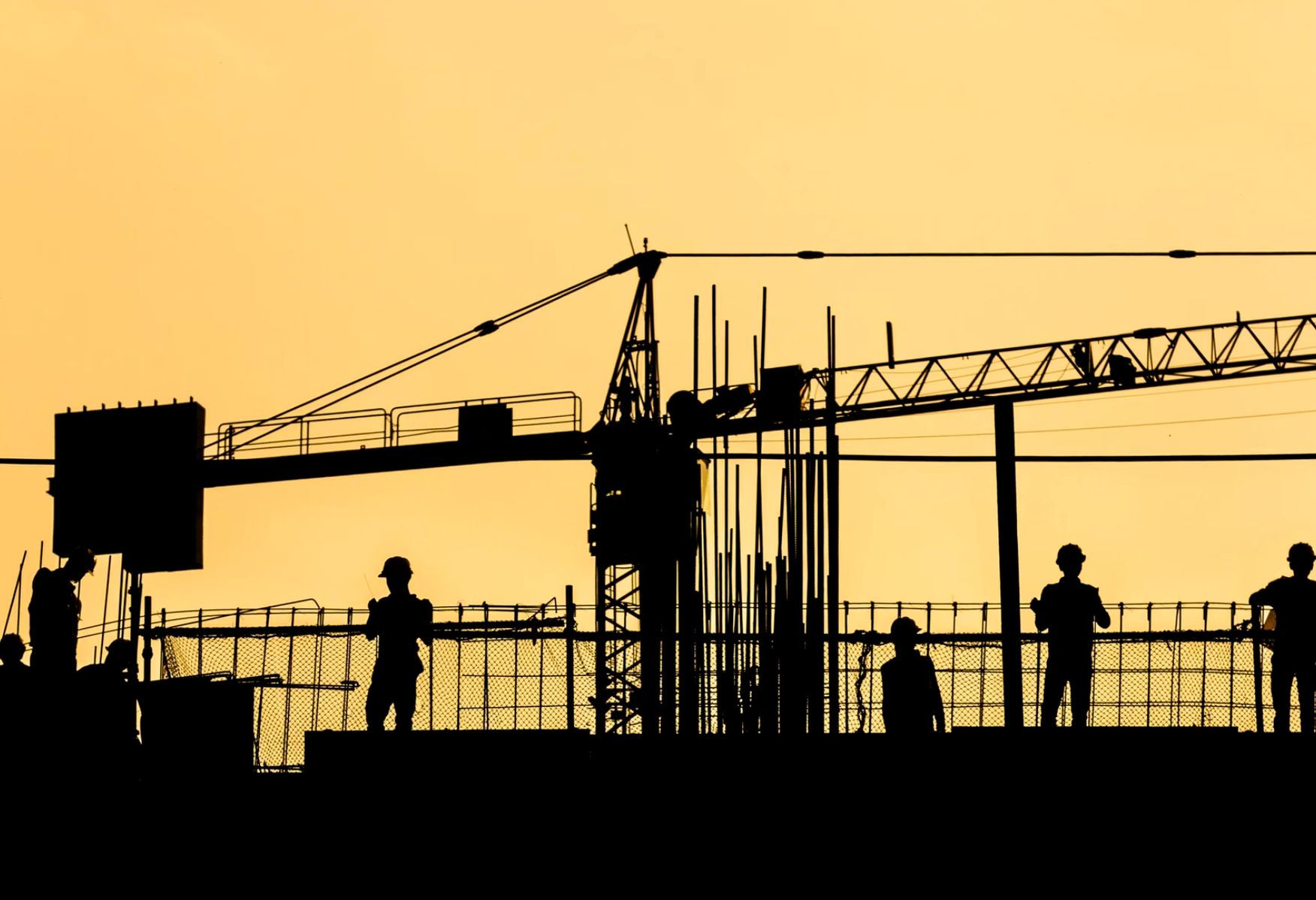Managing the construction process requires strong project management and communication skills. Use these tips, resources, and tools to save time and be more productive.

When you work in construction, you know that it’s a long, drawn-out process with plenty of moving pieces. Managing the construction process —and every tiny task that’s included along the way— is no easy feat, and it needs a special type of person with the right tools to get the job done.
If you sometimes struggle with managing the construction process, don’t feel bad. In fact, some of the most shocking project manager statistics state that fewer than one-third of projects are completed on time and on budget. Even the best bosses fall off the curve from time to time.
These missteps may be common, but they come with a significant cost. Ineffective construction & communication management practices can lead to:
- A lack of resources
- Inaccurate time, cost, and effort estimates
- Ineffective bids
- Underestimated risk assessments
- Poor documentation, project plans, and more
Some of the most common project failure causes include:
No one wants to have these effects come down on their construction projects. That’s why we’ve set out to create an outline of the best construction management practices. We want to make things simpler —and more effective— for you.
Below, we’ll cover:
- The details of what tasks construction managers should cover
- Tips for managing each step in the building process
- The importance of communication and some advice to ace it
- A few quality tools that can support you along the way
- And so much more
The Duties involved in Construction Management
Let’s start by looking into each of the duties that need to be covered during the construction management process. After all, if your project manager has too much or too little on his or her plate, it could be the root of some of the problems you face.
It’s important to note that these actions could be taken by construction managers, builders, superintendents, and more, depending on the specific person you decide to put in charge of your project.
At a glance, construction managers —and workers in similar roles— are responsible for:
- Planning the building process
- Creating a budget and ensuring it’s followed
- Supervising the entire construction crew throughout the process — subcontractors, suppliers, outside teams, etc.
They’re also responsible for a hefty amount of communication tasks.
The construction management process includes communication with everyone involved in the project — subcontractors, clients, suppliers, and potentially even more parties report to supervisors. They need to be able to not only speak and listen well, but keep all of the information they take in organized, too.
No matter what they’re working on, these essential project planners take part in every phase of the process, proving the importance of construction project management once again:
- Phase One: Planning and Organizing — In this stage, the construction manager —and supervisors in similar positions— play a key role in planning the entire construction process. They have a say in the budget and the material collection process — the exact supplies they’ll use, the places they’ll purchase them, etc. They may work on their own or with the help of designers, architects, and/or engineers, depending on the size and specifics of the project at hand. This is the phase where subcontractors are gathered and retained, and estimates are provided to customers.
- Phase Two: Active Construction — Perhaps one of the most essential duties of construction managers is the supervision they provide when it comes time to build. They ensure everything is moving in the right direction at all times — after all, there are many moving pieces making the smallest of details easy to forget. They ensure deadlines are met, subcontractors are on site when they’re supposed to be, and all local codes are followed. They can also act as the middleman for the team’s communication — subcontractors, designers, suppliers, etc.
- Phase Three: Post-Construction — Even after the project closes, the construction manager continues to work in various aspects. They supervise punch lists both during and after project completion—an essential piece of construction project management that we’ll touch on later on— and close contracts, gather necessary certificates of occupancy, resolve any disputes that may have come up throughout the project, and more.
After seeing everything a construction manager does on a daily basis, it’s easy to see how essential their tasks are to every building process that takes place. From start to finish, they supervise and keep every piece of the project on track — communicating with subcontractors, suppliers, clients, and more to ensure success in every possible way.
The Construction Building Process and its Steps
When we said construction managers work in every part of the construction process, we meant it. They manage the step-by-step guide to the home building process:
- Planning and Preparation — Managing the construction process begins long before breaking ground. In this stage, construction managers are often bidding to get the job, coordinating subcontractors, applying for city permits, checking on supplies, and a whole lot of other legwork. They supervise the crew as the land is prepared — bulldozed, cleared of rocks and trees, etc. They watch over workers as footings and foundations are set, basements are dug, wells are placed, concrete slabs are poured, and more.
- Framing — This is where the building starts to take its shape. Studs are set and the roof is built. Exterior walls are covered with sheathing and covered in a protective wrap. The construction managers are supervising and keeping in close contact with owners, suppliers, and subcontractors — making sure everyone is on the same page for every single action that takes place.
- Rough Plumbing, HVAC, and Electrical — The following assets can be installed during this stage or just before exterior walls are placed — pipes, sewer lines, vents, water supply lines, bathtubs, showers, sinks, electrical wires, ductwork, and the HVAC system. These jobs are done by a number of different subcontractors, making communication on the construction manager’s behalf extremely important throughout the process.
- Insulation — This stage has just one step, though it is a large task. Insulation could be hung in rolls or blown into place, and it could be made of foam, fiberglass, or cellulose depending on the client’s climate and personal preference. Subcontractors may need to be hired if they’re needed to do the work, and the supplies will need to be delivered to the site in a timely and mistake-free manner.
- Drywall/Interior Fixtures — During this stage, drywall is hung, taped, and painted with a coat of the client’s chosen shade. It may be textured if that was part of the plan as well. Interior fixtures are installed and exterior finishes, such as bricks or siding, are set as well. This often includes work by at least two subcontractor teams if not more — one inside and another outdoors. It also requires perfect client communication, as it’s getting to the stage where their desired looks are being put into place.
- Interior Trim/Sidewalk/Driveway — This stage brings trim, doors, door casings, kitchen cabinets, window sills, stair railings, and more, Outside, it covers concrete work for the driveway and walkways. This is done last since the heavy trucks that were needed early on could have damaged the freshly done concrete if it would have been in place.
- Flooring, Countertops, and Outside Grading — Now comes the flooring —hardwood, tile, vinyl, or a mixture that the client chose— as well as countertop installation. The last functional steps are completed outside to ensure no water leaks into the new building as well.
- Mechanical Trims and Features — The construction manager will welcome electricians back at this time, as the electrical panel, light switches, and outlets will be placed and tested. HVAC workers will return to install systems and registers, and plumbers will stop by for the installation of toilets, sinks, and faucets, too. Once again, the level of organization and communication is staying high throughout the building process.
- Details/Landscaping — Inside, the harder-to-keep-clean details are installed — think mirrors, shower doors, and carpet. Outside, the yard is improved through landscaping with grass, rocks, flower gardens, and more depending on the client’s specific requests.
- Punch List/Final Walk-Through — At this point, the construction manager is working hard to ensure every last detail of the project is complete. If anything is missing or not done up to standards, the manager will have it fixed before moving on. The client will walk through the space to approve the build as well.
Each step of the construction process is different, but there is one main characteristic that connects each time frame — communication.
With so many parties working together on the same overall project, the construction manager needs to ensure everyone is being heard —and spoken to— in a way that will allow for smooth work — and an incredible creation when the project is complete.
Here are five communication-related tips to make sure every assignment ends well:
- Build Better Supplier Communication — Suppliers may be the first people construction managers need to communicate with when each project begins. Following supplier communication tips can help. To start, managers need to ensure materials are available and will arrive on time before they become solidified parts of the plan — and long before the work actually begins. CMs should be clear with their needs from the very start, and should avoid using overly complicated field terms in conversation. This helps to ensure no details get lost in translation throughout the process. It’s also important to make a clear plan for who will contact suppliers, what technologies will be used in communication, how often you’ll check in, and what reports the supplier needs to provide. When expectations and plans are clear, the building process will have a much better shot at running smoothly.
- Create Strong Subcontractor Communication — Even if they aren’t the first, subcontractors may be the most essential project participants to communicate well with. They’re completing the work your client requested, and it’s partially the construction manager’s job to ensure no detail gets left behind. Make sure these workers know you’re always a text away if questions or troubles arise on the jobsite as well.
- Improve Subcontractor/Client Communication Habits — Client communication can quickly turn for the worse when it’s not handled professionally. Be sure you always set time aside to check messages and return phone calls, as clients can become discouraged if you’re difficult to contact. Use technology for reminders when you can, and try to talk in person for the more difficult or complicated subjects. Don’t forget to incorporate text messaging for the day-to-day updates as well, as this is often the style of communication today’s clients prefer.
- Have an Overall Communication Plan — Even if you are communicating well, things can still get jumbled up when you’re working with a large team. Make sure you establish a communication chain of command, or at least assign specific project participants to certain tasks. This will make sure every necessary conversation is had —and is only had once— leading to less misunderstanding down the line.
- Implement Quality Punch Lists at the End of Each Project — A successful punch list experience ensures every part of the project ends in its desired fashion. These needs can be communicated better if a list is used — whether that’s a simple to-do list or a convenient, app-based creation is up to you. A final punch list report should be created and shared with project participants, and clients should approve of the tasks once they’re complete, so don’t forget to keep them in the conversation, too.
Construction Apps for Added Support
It’s clear that managing the construction process has many moving pieces, and that it can be difficult to keep track of every single one. Thankfully, there are plenty of apps on the market today to support you every step of the way.
Construction management software features, benefits, types, and pricing all play a role in the most common app usages on the market today:
The most important app, however, is likely the one that will help you best communicate with each and every project participant. This is because communication is essential to the success of every construction project, as we saw in multiple fashions in the post above.
At Rivet, we want to help construction crews, managers, and leads streamline and manage your construction process efficiently. We’ve designed an app to fill the gap between personal texts, notebooks, and onsite PDF print outs with project details and contacts — providing a centralized spot for every project participant to communicate.
We know you have limited time so our app was designed to be easy for anyone to use, accessible on every device, and comprehendible no matter what language each project participant speaks.
A few specific ways Rivet’s features allow for these benefits include:
- Conversation Organization — Rivet lets you organize conversation by project. In the app, you can communicate with anyone on or off of Rivet simply by adding people from your contacts to a chat. When you send a message, Rivet will deliver that message via SMS (or text). The recipient can then respond to the text thread in their native text app, and their response gets pulled into Rivet and organized, ensuring you won’t be left scrolling through old threads to find the messages you need.
- Access to Important Project Information — Rivet also keeps important information together in one place. If a project participant needs a lockbox code or a client phone number, they know exactly where to find it. You no longer have to send the same information multiple times, people can quickly and easily access links, information, and documents from a central hub on any device.
- Language Translation — Since the construction field is often diverse. Rivet offers the ability to translate languages whenever it’s needed. If you receive an in-app message or personal text in Spanish, for example, you can translate it to English. For those using Rivet, they can translate anything in English to Spanish.
Aside from the ability to take advantage of these features specifically build for the construction industry, why is it so important to have an app that allows for effective communication while managing the construction process? One reason is that it leads to lower stress levels for everyone involved.
A study of communication in construction showed that:
- 80% of employees feel stressed about their company’s lack of efficient communication
- 36% have confusion surrounding where to find the information they need to work
- 63% have gone as far as considering quitting due to their company’s lack of communication
Your crew doesn’t deserve this stress, and you shouldn’t have to deal with it while you’re managing the construction process, either. Contact us today or simply download our app to improve communication efforts for your entire project team — lowering stress levels one message at a time.
Visit our website to learn more about how our app is building strong teams with strong communication. Our FAQ section may have answers to a few of your top questions, too.
If not, feel free to reach out at any time. After all, at Rivet, we’d love to help improve your construction communication in any way we can.
Want to learn more? Check out our guides:


